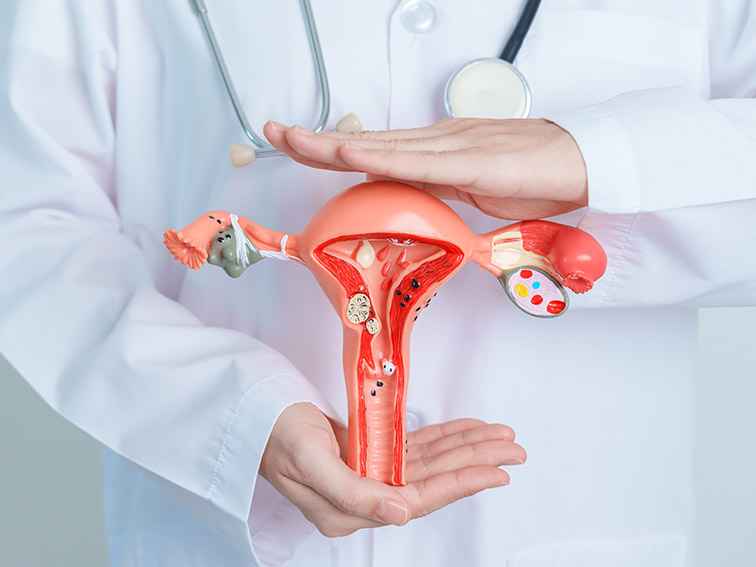ADNEXAL TUMORS – Symptoms & Risk
Adnexal tumors occur in the connective tissues around the fallopian tubes or ovaries, uterus and surrounding connective tissues. Some types of adnexal tumors are solid while others are fluid-filled. The term adnexa refers to the fallopian tubes, ovaries and ligaments that protect these parts. Adnexal tumors develop in the adnexa of the uterus. They can appear at any age and mostly go away on their own.
Around 5 to 10% of women of childbearing age develop adnexal tumor at some point in their lifetime.
The first question that comes to the mind when talking about adnexal tumours is – Do they cause cancer. The answer is – most often, they are non-cancerous (benign). However, they might turn cancerous (malignant) as well.
What is the difference between adnexal tumors and uterine polyps?
Adnexal tumors are non-cancerous growths of cells around the ovaries, fallopian tubes, uterus and surrounding connective tissues. Whereas, uterine polyps are growth that form from inside the uterine lining. These two conditions share similar symptoms – such as menstrual irregularities.
What percentage of adnexal tumors may turn cancerous?
A majority of adnexal tumors are benign (noncancerous). However, around 15 to 20% of adnexal tumors may turn cancerous. The risk of development of malignant adnexal tumors is high in post-menopausal women compared to premenopausal women.
Adnexal mass symptoms
Many women don’t experience any symptoms. However, symptoms if present may include:
- Lower abdominal or pelvic pain
- Constipation
- Bloating
- Frequent urination
- Difficulty urinating
- Irregular menses
- Abdominal (pelvic) pressure
- Urinary frequency
- Changes in bowel habits
- Pain during sex
Girls younger than 10 years frequently present with pain, as do older women who have infected masses or endometriosis.
In young girls
What can you expect if you have an adnexal mass?
Your gynecologist will take care of you and formulate a customized treatment plan. If they do not cause any symptoms, your gynecologist will most likely monitor with periodic imaging tests to make sure that the mass is not growing. However, if your adnexal mass causes symptoms – pelvic pain, menstrual irregularities and internal bleeding, then it will be removed surgically. Adnexal torsion classically presents with acute abdominal pain, requiring urgent surgical intervention.
Is It Possible to Prevent Adnexal Mass?
No, it is not possible to prevent adnexal tumors. However, you can still reduce the risk of associated complication with early detection and periodic follow ups with your gynecologists.
When should you seek emergency medical care?
In a majority of the cases of adnexal tumors your gynecologist will monitor your case with periodic testing and regular follow up care. However, in some cases, a woman with adnexal tumor may experience intense pelvic pain, fever and dizziness – which could be due to ruptured ovarian cyst, tubo-ovarian abscess, adnexal torsion or ectopic pregnancy. In these circumstances, one must seek emergency medical care.
Bottom line
If your gynecologist says that you have been diagnosed with adnexal tumor, then you must seek periodic follow ups even if the condition doesn’t cause any symptoms. Your gynecologist will check whether your tumor has grown. In addition, you will also let her know if you develop any uncomfortable symptoms.
A note from Dr. Rajeshwari Reddy
In a majority of the cases, adnexal masses get better on their own within a few months. However, in some cases, they may cause pelvic pain, abdominal symptoms such as – constipation, bloating, urinating difficulty and painful sex. In any case, early detection is the key to successful management and treatment of the condition. Your gynecologist will tell you whether you need adnexal tumor treatment based on your symptoms.




